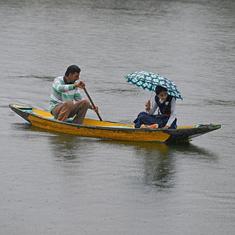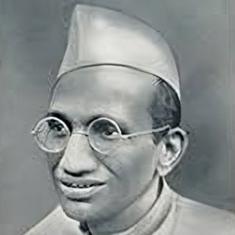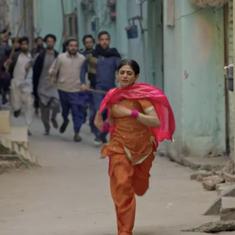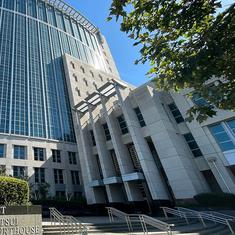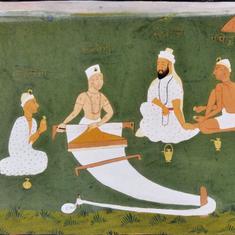In February 1944, with few signs of the Second World War drawing to a close, the colonial authorities in India – who had interned many citizens of Axis nations and held enemy combatants in Indian prisons – requested the Home Department to compile data on the number of foreigners from several countries residing in India.
The Intelligence Bureau specifically sought precise figures on Americans, Chinese, French, Iranians, Iraqis and Poles, as well as both interned and non-interned Germans and Italians living in the country.
When collating this information across the vast, undivided subcontinent, the Home Department identified 42,673 registrable foreigners. A detailed breakdown by region was provided, revealing the presence of foreigners in places where they were not really expected. Also revealed by the data was the presence of individuals from countries as far-flung as the Philippines, Estonia, Cuba and Uruguay.
Chinese presence
The Chinese community, numbering over 22,000, was the largest group of foreigners in India and was widely dispersed across the country. The Home Department categorised this population by gender and region, offering fascinating insights. Most were ethnic Han Chinese, though certain cities also had communities classified by the department as “Chinese Turks”, likely referring to people from Xinjiang. There were also ethnic Kazakhs from China residing in the North-West Frontier Province.
The majority of Chinese nationals in India at the time were men, with 2,109 women recorded. In the North-West Frontier Province, 1,093 Chinese residents included 444 women, suggesting that families had settled in that region.
Bengal had the largest number of Chinese nationals, with the Home Department putting the number at 14,216. Remnants of this community still exist in Calcutta, though they are now Indian citizens. Bombay was home to nearly 3,000 Chinese nationals.
The Chinese were present throughout India, with notable populations in Assam, Bihar, Delhi, Madras, Mysore, Sind, Punjab, and the United Provinces. Smaller numbers were even found in Orissa and Baluchistan.
As China was an Allied Power and had suffered heavily under Japanese aggression, the Chinese presence in British India was not met with suspicion during the war.
American community
Americans formed the second-largest foreign group in India in 1944, numbering 4,063. Nearly half were women.
At the time, there were far more Americans in India than Indians in the United States, owing to severe restrictions on Indian immigration to the US.
Bengal hosted the largest number of Americans, with over 1,700 residents. Interestingly, there were relatively few Americans in Bombay (227) and Delhi (82), while the United Provinces, Madras and Mysore had larger American communities. Records show that two American women lived in Kashmir, though no men from the US were recorded in the princely state.
Colonial authorities also noted Americans of Mexican and Hawaiian origin, along with a significant number of missionaries, who were widely dispersed across the subcontinent.
Russians and Soviet citizens
Soviet citizens were mostly classified as Russians in the records, with 707 listed in total. The most famous Russians in India were members of the Roerich family, who resided in the Kulu Valley.
The community was broadly dispersed, including 165 in Bombay, nearly half of whom were Tajiks, Uzbeks or other ethnicities labelled by the British as Asiatics. Russian Turks were categorised separately, likely to facilitate racial distinctions in clubs and private institutions that restricted entry to Europeans.
Russian visitors to South Asia in the 20th century frequently noted the overt racism of British colonial authorities. Nobel Laureate Ivan Bunin, who visited Ceylon (but not India) in 1911, highlighted this in his short story Third Class, set in Colombo. In it, a European, presumably Russian, demands a third-class ticket to Anuradhapura and is initially refused by a British clerk who insists no white man would possess “a base and inane desire to sit next to a coloured person” who could infect him with germs. After persistent demands, the traveller receives his ticket, only to find the compartment has been cleared of locals.
Russians were among the most widely scattered foreigners in India. Records show three in Assam, four in Balochistan, five in Madras, and even a stateless Russian man in Kashmir.
Although Britain and the Soviet Union were wartime allies, the British did not recognise the Baltic states of Latvia, Lithuania and Estonia as part of the USSR. In 1944, the three were occupied by Nazi Germany and their citizens in India were viewed with suspicion.
Of the seven Lithuanians in India, four lived in Bihar – two of whom were interned – while the only Lithuanian in the North-West Frontier Provience was sent to an evacuee camp in Nainital. None of the 15 Latvians in India were interned. Of the eight Estonians, two were interned in Bombay, and one in Sind.
There were 48 Finnish nationals in India at the time. As Finland was aligned with Nazi Germany against the USSR, its citizens were treated with particular caution. Fourteen of the 15 Finns in Bombay were interned, and three each in Kashmir and Sind met the same fate.
However, Finns and Balts in Calcutta remained free, likely because they had arrived before the war and were employed by British firms.
Scandinavians & Asians
The Home Department also documented a significant number of Swedes, Danes and Norwegians. Of the 258 Danes recorded, just a handful were interned. Madras had 56 Danish nationals, including 38 women.
Denmark and Norway were both under Nazi occupation at the time. Despite this, only three of the over-300 Norwegians in India were interned. The Norwegian community was scattered, with most residing in Bengal, Bombay and Bihar.
More than 300 Swedes were in India, with Madras hosting the second-largest community after Bengal. As Sweden remained neutral during the war, Swedish nationals enjoyed the same freedoms as those from China and the United States.
India, under British rule, was seen as a land of opportunity by many foreigners, including those from Southeast Asia. A small Filipino community lived in Bengal, with a few individuals scattered across Assam, Madras and Punjab.
Less fortunate were the Javanese – legally Dutch citizens – many of whom were interned by the British. In Bombay, 196 Javanese were interned, while 24 in Rajputana were sent to a camp in Deoli.
Still, many Indonesians, including Sumatrans and Javanese, lived freely in India, particularly in the United Provinces, Gwalior and Hyderabad. Despite being Dutch nationals, they were classified as Asiatics and denied privileges afforded to Europeans.
Of the 312 Japanese nationals in India at the time, only 71 were interned. Surprisingly, more than 60% of the 1,100 Italians and two-thirds of the 1,859 Germans were “at liberty”.
Global cross-section
The Home Department also recorded Arabs, Iranians, Uruguayans, Argentinians, Brazilians, Hungarians, Greeks, Spaniards, Swiss, Turks, Portuguese, Thais, Albanians, Cubans, Czechs and Slovaks residing in India.
Bengal, with Calcutta as a major commercial hub, had the largest number of expatriates from around the world. Bombay followed, though it hosted far fewer foreigners in comparison.
Bihar emerged as one of the most popular regions for foreigners in British India. It was home to people from across the globe. The once-flourishing Armenian community had dwindled to just 41 members, of whom 26 lived in Bihar, 13 in Mysore and the rest in the United Provinces.
After India gained independence in 1947, the foreign population steadily declined. Although pathways to citizenship were available – especially for Commonwealth nationals – limited economic prospects prompted the majority of foreigners to leave the country.
Ajay Kamalakaran is a writer, primarily based in Mumbai. His Twitter handle is @ajaykamalakaran.



